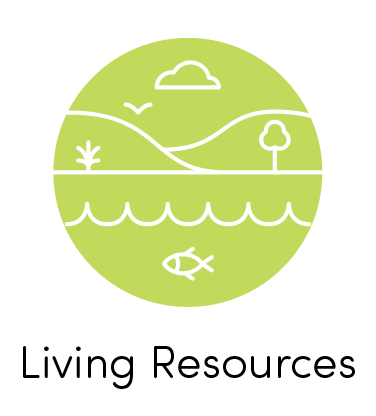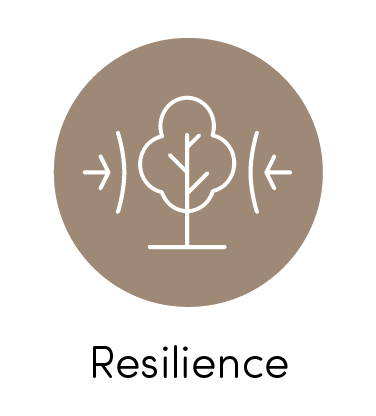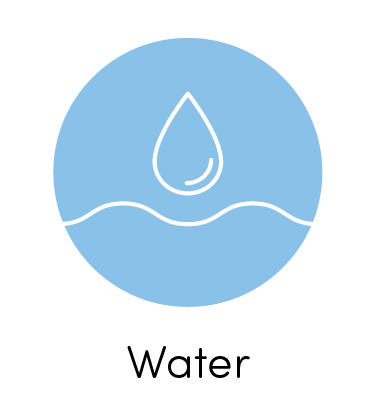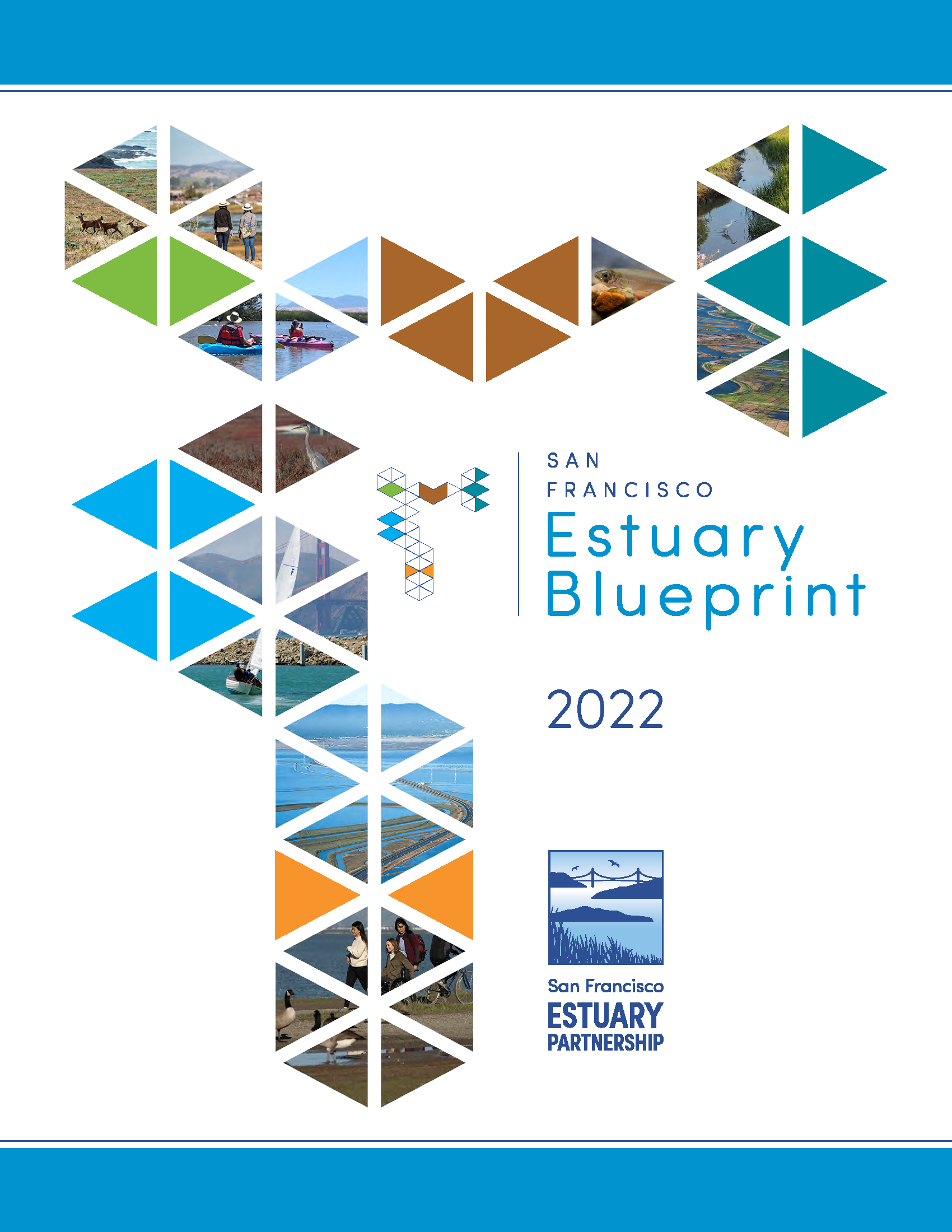Action 5: Watershed Connections
← Back to Estuary Blueprint Actions
Restore watershed connections to the Estuary to improve habitat, flood protection, and water quality.
Plan and implement projects and programs that connect watersheds to the Estuary to enhance habitats, natural processes, and ecosystem services. Potential benefits may include tidal, intertidal, and open water habitat restoration; flood management; water quality improvement; fish passage and food supply; wave energy reduction; groundwater recharge; sediment delivery; wildfire management; and recreational opportunities.
Overview
Historically, watershed connections such as creeks and floodplains have provided important transition zones and habitat for wildlife, rich sediment and organic matter for diverse tidal marshlands, improved groundwater percolation for better water quality, and robust absorbent properties for runoff capture and flood control. Over time, humans have modified these important watershed connections in ways that now disrupt the natural exchange of water and sediment that nourishes complex habitat mosaics for native wildlife.
Task Description
Advance a watershed-based approach to landscapes to align reservoir, stormwater, flooding, groundwater, sediment, wildfire, restoration, nonpoint source pollution control, and climate change adaptation management activities as well as water supply planning, compensatory mitigation, and voluntary restoration, to provide multiple benefits.Task Lead(s)
San Francisco Estuary Institute, local watershed management agenciesTask Collaborating Partner(s)
California Department of Fish & Wildlife, California Department of Water Resources, National Oceanic and Atmospheric Administration, San Francisco Bay Conservation & Development Commission, San Francisco Bay Regional Water Quality Control Board, Santa Clara Valley Water District, State Water Resources Control Board, U.S. Army Corps of Engineers, U.S. Environmental Protection AgencyCost Estimate Key
|
Cost Estimate
$$Milestone(s)
Demonstration watershed identified and principal land and resource managers convened to explore existing tools, datasets, and appropriate numerical models for the development of coordinated permitting and management activities in the watershed for multiple benefitsTask Description
Increase environmental planner and practitioner use of planning tools and guidance documents developed for multi-benefit projects that restore watershed connections by improving the understanding of and access to such tools and documents, including examples of their successful use in the region to implement multi-benefit projects.Task Lead(s)
San Francisco Estuary InstituteTask Collaborating Partner(s)
Delta Stewardship Council, National Oceanic and Atmospheric Administration, San Francisco Bay Conservation & Development Commission, San Francisco Bay National Estuarine Research Reserve, San Francisco Bay Regional Water Quality Control Board, San Francisco Estuary PartnershipCost Estimate Key
|
Cost Estimate
$$Milestone(s)
Three to six workshops held on multi-benefit habitat restoration and flood management that provide a comprehensive review of the most recent tools and guidance documents for planners and practitioners.Task Description
Advance the use and implementation of sediment management principles and approaches at the Bay margins identified in the 2021 Sediment for Survival Report to improve sediment supply and conveyance in Operational Landscape Units (OLU) with the greatest potential for tributary sediment supply to meet demands, given appropriate intervention.Task Lead(s)
San Francisco Estuary Institute, San Francisco Estuary PartnershipTask Collaborating Partner(s)
Bay Area Flood Protection Agencies Association, San Francisco Bay National Estuarine Research Reserve, San Francisco Bay Regional Coastal Hazards Adaptation Resiliency Group (CHARG), San Francisco Bay Regional Water Quality Control BoardCost Estimate Key
|
Cost Estimate
$$Milestone(s)
Stakeholders for one Operational Landscape Unit (OLU) identified and convened to demonstrate OLU partnership structure and advance sediment transport planning.Task Description
Develop a regional coarse sediment strategy to identify potential need for and sources of coarse sediment, reuse methods and locations, and logistical, financial, and regulatory challenges. Develop possible management techniques for transporting sediment trapped in flood control channels into Bay margin ecosystems through natural processes where possible and through active interventions where not possible.Task Lead(s)
Marin Department of Public Works Engineering Sea Level Rise Program (E-SLR)Task Collaborating Partner(s)
California State Coastal Conservancy, National Oceanic and Atmospheric Administration, San Francisco Bay Conservation & Development Commission, San Francisco Bay Regional Water Quality Control Board, San Francisco Estuary Institute, San Francisco Estuary Partnership, Santa Clara Valley Water DistrictCost Estimate Key
|
Cost Estimate
$$$Milestone(s)
San Francisco Bay regional coarse sediment strategy and scientific report that identifies possible management techniques for transporting sediment in flood control channels to their marshes.Task Description
Task Lead(s)
Task Collaborating Partner(s)
Cost Estimate Key
|
Cost Estimate
Milestone(s)
Task Description
Task Lead(s)
Task Collaborating Partner(s)
Cost Estimate Key
|
Cost Estimate
Milestone(s)
Task Description
Task Lead(s)
Task Collaborating Partner(s)
Cost Estimate Key
|
Cost Estimate
Milestone(s)
Task Description
Task Lead(s)
Task Collaborating Partner(s)
Cost Estimate Key
|
Cost Estimate
Milestone(s)
Updates and Emerging Issues
Since 2016, this Action has been updated to align with the findings and recommendations from the 2021 Sediment for Survival Report. The report integrates an Operational Landscape Unit (OLU) framework into a watershed-based approach to manage the complexity of the Bay shoreline. This Action now focuses on advancing sediment transport to supply sediment to the shoreline and on leveraging and encouraging natural ecosystem processes to accomplish watershed connectivity where flood control channels have disrupted natural sediment delivery to the Bay margins. In the future, additional opportunities for sediment transport will need to be identified, such as reservoir reoperations for sediment supply.
Climate Change Considerations
Significant amounts of sediment will be needed to combat the threat of drowning wetlands due to sea level rise. Improving watershed connections, and thus sediment deposition, has the potential to reduce flood hazards to frontline communities, whose flood control infrastructure is frequently outdated or failing.
Equity Considerations
Restoring watershed connections, if implemented with an equity lens, can provide benefits to frontline communities that frequently have outdated or failing flood control infrastructure and reduced or inaccessible green spaces. Watershed-based planning efforts should include community and Tribal input to ensure equitable outcomes.
Blueprint Goals



Connections to Other Actions
Watershed connections provide unique habitat and ecosystem services closely related to or dependent upon:
Action 1: Climate Resilience
Action 3: Adaptation Planning
Action 4: Adaptation Implementation
Action 6: Sediment
Action 7: Carbon Management
Action 11: Transition Zones
Action 14: Creeks
Action 19: Stormwater Management
